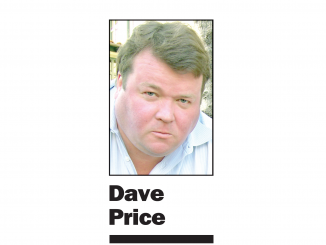
BY DAVE PRICE
Daily Post Editor
Neil Armstrong and Buzz Aldrin led very different lives after their historic walk on the
moon 50 years ago today (July 20), and each came to Palo Alto for different reasons.
Armstrong, who died in 2012, kept a low profile and avoided media interviews or public appearances. On the other hand, Aldrin, who is 89, has remained highly visible as he advocated for the U.S. to do more in space.
While they worked flawlessly together in a cramped space vehicle in 1969, they apparently had a falling out in the years following Apollo 11.
When Aldrin visited Palo Alto in 2010, he was asked if he still spoke to Armstrong. He responded with one word: “No.” He offered no explanation.
Six months before he died in 2012, Armstrong slipped into Palo Alto’s Crowne Plaza Cabana Hotel to address a conference of about 400 engineers and space enthusiasts. His talk in Palo Alto was so important to him that he canceled an overseas trip to be here.
His topic: the further development of suborbital spacecraft, which are designed to reach an altitude of 68 miles before returning to Earth. Numerous scientific experiments can be conducted at this altitude, which is at nearly zero gravity.
Armstrong was a test pilot for the 1960s-era X-15 research plane, which explored the suborbital realm, before he became an astronaut and later commander of Apollo 11.
“In the suborbital area, there are a lot of things to be done. This is an area that has been essentially absent for about four decades,” Armstrong told the Palo Alto conference-goers.
“I certainly hope that some of the new approaches will prove to be profitable and useful,” he said.
Mars exploration
Aldrin came to Palo Alto on July 8, 2010, as the guest of JetSuite, a private jet charter company that held an event at the Garden Court Hotel to line up new customers.
Aldrin used the opportunity to talk about speeding up the exploration of Mars. Specifically, he talked about putting three astronauts on Phobos, one of Mars’ two moons.
Aldrin reflected on what America was like when he returned from the moon. He said that during a visit to Marquette University, students threw eggs at him and other astronauts. He said the students, upset with America’s involvement in Vietnam, were “anti-establishment” and thought “anything the establishment does must be bad,” including space exploration.
Aldrin complained that kids today no longer strive to be astronauts and that interest in science and engineering has been replaced with being “rock stars and basketball players.” That wasn’t the case in the 1960s, he said.
“Why? Because we had a space program that inspired them,” Aldrin said.
Return to the moon?
Aldrin and Armstrong disagreed on whether the U.S. should return to the moon. While Armstrong wanted to go back, Aldrin told the Palo Alto audience it would be a waste of time.
Aldrin’s focus has been on Mars. He’s proposed a special spacecraft trajectory that would reduce the time to reach Mars to five and a half months. He’s also written a plan to colonize Mars with NASA astronauts serving a 10-year tour of duty on the red planet. He said the U.S. should try to homestead Mars to make humans a two-planet species.
Other Post stories on the 50th anniversary of the moon landing
• Where were you when man walked on the moon? The Post asked its readers
• Local residents played a key role in moon program
• Front page reporting man had landed on the moon
• Locals restore Apollo 11 computer, get it to run moon landing program
• What was happening in Palo Alto when man landed on the moon




Pretty sad how we turned over the space program to people like Musk, Bezos and Branson. Armstrong and Aldrin were real heroes. These billionaires are just opportunists.